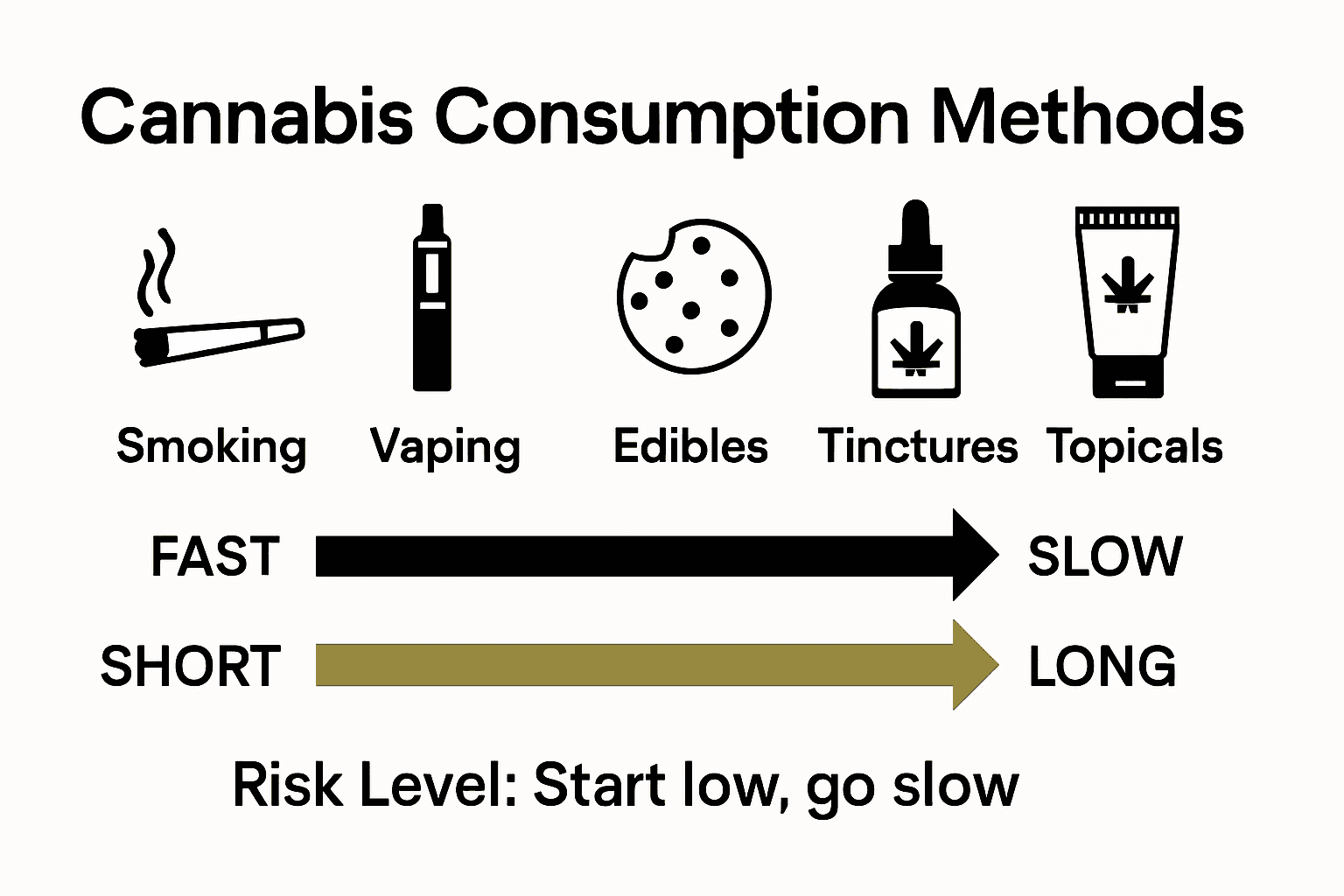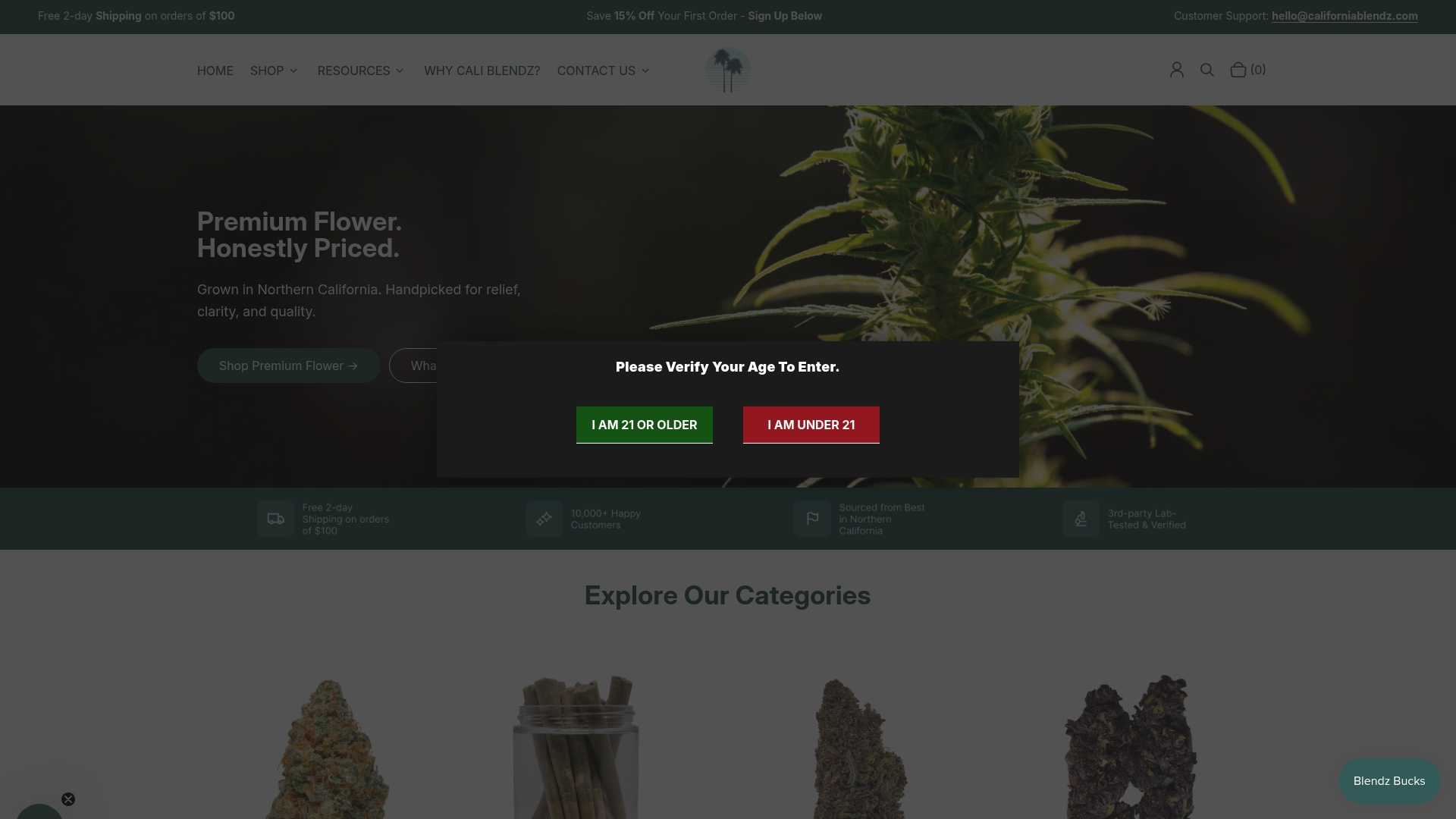Complete Guide to Responsible Cannabis Use
Written by Trevor

More than 50 million adults in the US used cannabis last year, but safe and responsible use remains a challenge for many. With evolving laws and new products flooding the market, making informed choices matters now more than ever. This guide helps you understand the principles of responsible cannabis consumption, key product differences, safe dosing, and what it takes to protect your health and follow the law.
Table of Contents
- Defining Responsible Cannabis Use
- Types and Effects of Cannabis Products
- Safe Consumption: Dosing and Delivery Methods
- Legal Responsibilities and Regulations
- Preventing Risks and Ensuring Safety
Key Takeaways
| Point | Details |
|---|---|
| Responsible Use | Prioritize personal well-being by adhering to legal age, understanding health impacts, and consuming in safe environments. |
| Understanding Products | Familiarize yourself with different cannabis products, their effects, and personal tolerance to ensure informed consumption. |
| Dosing and Delivery | Start with low doses and be aware of how various delivery methods impact onset and duration of effects. |
| Legal Compliance | Stay informed about local regulations regarding cannabis use, including age restrictions and possession limits to maintain accountability. |
Defining Responsible Cannabis Use
Responsible cannabis use is a thoughtful approach to consuming cannabis that prioritizes personal well-being, safety, and respect for others. According to UC Berkeley Health Services, responsible use involves making intentional choices that minimize potential risks and maximize potential benefits.
Responsible consumption encompasses several critical considerations:
- Age and Legal Status: Strict adherence to local legal requirements, ensuring cannabis is only consumed by legal adults
- Personal Context: Understanding individual health conditions, mental state, and potential interactions with medications
- Consumption Environment: Choosing safe, comfortable settings where impairment will not compromise personal or public safety
- Dosage and Frequency: Maintaining moderate, controlled consumption that does not interfere with personal development or daily functioning
At its core, responsible cannabis use requires self-awareness and a proactive approach to managing potential risks. As outlined by UC Berkeley, this means avoiding impairment during critical activities like driving, being mindful of potential health impacts, and respecting the boundaries of those around you.
Responsible users also recognize that cannabis affects everyone differently. Navigating cannabis wellness without the high requires understanding your personal tolerance, setting clear boundaries, and prioritizing overall wellness over recreational excess.
Types and Effects of Cannabis Products
Cannabis encompasses a diverse range of products with varying compositions, potency levels, and potential effects. National Institute on Drug Abuse identifies multiple forms including dried leaves, flowers, stems, and seeds, each offering unique characteristics and experiences.
Primary cannabis product types include:
- Flower/Dried Herb: The most traditional form, consisting of dried cannabis plant material typically consumed through smoking or vaporization
- Concentrates: Highly potent extracts like hash oil, wax, and shatter with elevated cannabinoid concentrations
- Edibles: Cannabis-infused food and beverage products offering alternative consumption methods
- Tinctures: Liquid extracts absorbed sublingually, providing precise dosage control
- Topicals: Non-psychoactive products applied directly to the skin for localized effects
Understanding cannabis potency becomes crucial when exploring different product types. According to University of New South Wales, effects can dramatically vary based on consumption method, individual physiology, and specific product characteristics.
Each cannabis product offers distinct experiences, from mild relaxation to more intense psychoactive effects. Responsible consumers should carefully research and understand these variations, considering personal tolerance, desired outcomes, and potential health implications before selecting a specific cannabis product.

Safe Consumption: Dosing and Delivery Methods
Safe cannabis consumption requires a nuanced understanding of dosing and delivery methods that minimize potential risks while maximizing desired effects. National Institute on Drug Abuse emphasizes the critical importance of understanding how different consumption methods impact the body and mind.
Delivery methods vary significantly in their onset, duration, and intensity:
- Smoking: Fastest onset of effects, but potentially harmful to respiratory system
- Vaping: Rapid absorption with potentially reduced respiratory risks
- Edibles: Slower onset, longer-lasting effects, more challenging to dose precisely
- Tinctures: Sublingual absorption offering more controlled dosing
- Topicals: Localized effects with minimal systemic absorption
Cannabis dosing basics become crucial for responsible use. A systematic review published in PubMed highlights the importance of consistent dosing and understanding individual tolerance levels.
Beginners should always start with low doses and progress slowly. Factors like body weight, metabolism, tolerance, and individual biochemistry significantly influence cannabis effects. Pay attention to your body’s response, avoid mixing with alcohol or other substances, and create a safe, comfortable environment for consumption. Remember: responsible use is about understanding your personal limits and prioritizing your overall well-being.

Legal Responsibilities and Regulations
Cannabis legal responsibilities represent a complex landscape of evolving regulations that require careful navigation and understanding. Personal Use of Marijuana by Responsible Adults Act of 2008 highlights the ongoing legislative efforts to clarify legal boundaries surrounding cannabis consumption.
Key legal considerations for responsible cannabis users include:
- Age Restrictions: Strict adherence to minimum legal age requirements
- Possession Limits: Understanding maximum allowable quantities
- Consumption Locations: Knowing legal and prohibited public spaces for use
- Transportation Regulations: Specific rules about carrying cannabis in vehicles
- Medical vs. Recreational Distinctions: Different legal frameworks for various usage contexts
Understanding cannabis user privacy becomes crucial in maintaining legal compliance. Responsible users must stay informed about local and state regulations, which can vary significantly between jurisdictions.
Legal responsibilities extend beyond mere compliance. They encompass a broader commitment to public safety, personal accountability, and respect for community standards. This means not only following letter of the law, but understanding the spirit of regulations designed to protect individual and collective well-being. Always research current local laws, maintain discretion, and approach cannabis use with a mature, responsible mindset.
Preventing Risks and Ensuring Safety
Cannabis safety requires a proactive and mindful approach to consumption, acknowledging potential risks and implementing strategic preventive measures. Substance Abuse Treatment, Prevention, and Policy emphasizes the critical importance of monitoring use patterns, particularly among young adults, to mitigate potential health and behavioral risks.
Key risk prevention strategies include:
- Personal Environment: Choose safe, comfortable settings for consumption
- Mental Health Awareness: Understand personal psychological vulnerabilities
- Dosage Control: Start with low doses and progress gradually
- Interaction Monitoring: Avoid mixing with alcohol or other substances
- Medical Consultation: Discuss cannabis use with healthcare professionals
Understanding cannabis myths can help users make more informed decisions about their consumption. Responsible users must recognize individual variations in tolerance, potential side effects, and the importance of self-awareness.
Preventing risks goes beyond immediate consumption. It involves creating a holistic approach to wellness that considers long-term health implications, personal responsibilities, and potential impacts on personal and professional life. Stay informed, listen to your body, set clear boundaries, and prioritize your overall well-being when engaging with cannabis products.
Embrace Responsible Cannabis Use with Premium Quality Products
Navigating the world of cannabis responsibly means understanding your limits, choosing the right products, and prioritizing safety every step of the way. If you want to experience the benefits of cannabis while maintaining control over your wellness journey, our carefully curated collections at California Blendz can help guide you. Explore options that emphasize organic, lab-tested flower and thoughtfully crafted pre-rolls designed to suit your unique tolerance and lifestyle.

Start your responsible cannabis experience today by browsing The Founder’s Collection or elevate your selections with exclusive items from The THCa Prestige Vault. For those mindful of budget without compromising quality, check out our Products Under $20. Visit California Blendz now and take control of your cannabis journey with products you can trust.
Frequently Asked Questions
What is responsible cannabis use?
Responsible cannabis use is an approach that emphasizes personal well-being, safety, and respect for others. It involves making intentional choices that minimize risks and enhance benefits associated with cannabis consumption.
What are the different types of cannabis products and their effects?
Cannabis products include flower, concentrates, edibles, tinctures, and topicals. Each type has distinct effects; for example, edibles provide longer-lasting effects but have a slower onset compared to smoking or vaping.
How can I ensure safe cannabis consumption?
To ensure safe consumption, start with low doses, choose appropriate delivery methods, and consume in a safe environment. Always be aware of your body’s responses and avoid mixing cannabis with other substances.
What are the legal responsibilities associated with cannabis use?
Legal responsibilities include adhering to age restrictions, understanding possession limits, knowing where consumption is allowed, and differentiating between medical and recreational use. Staying informed about local regulations is crucial for responsible usage.
Recommended
- Cannabis Wellness Without the High: Navigating the Safe & Sober Path – California Blendz
- Understanding Cannabis and Sustainable Agriculture Practices – California Blendz
- CBD Safety Tips: Ensure Safe and Effective Use – California Blendz
- Complete Guide to Cannabis Product Labeling – California Blendz
- Complete Guide to Ethical Gambling Practices - Betco








